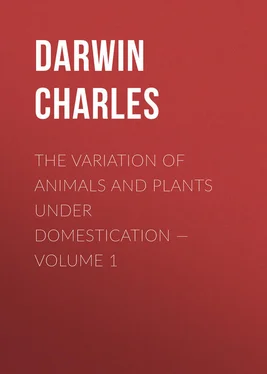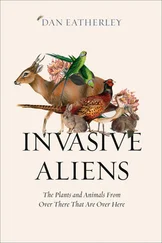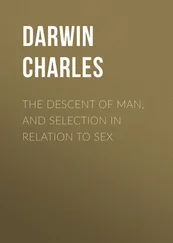Charles Darwin - The Variation of Animals and Plants under Domestication — Volume 1
Здесь есть возможность читать онлайн «Charles Darwin - The Variation of Animals and Plants under Domestication — Volume 1» — ознакомительный отрывок электронной книги совершенно бесплатно, а после прочтения отрывка купить полную версию. В некоторых случаях можно слушать аудио, скачать через торрент в формате fb2 и присутствует краткое содержание. Жанр: foreign_antique, foreign_prose, на английском языке. Описание произведения, (предисловие) а так же отзывы посетителей доступны на портале библиотеки ЛибКат.
- Название:The Variation of Animals and Plants under Domestication — Volume 1
- Автор:
- Жанр:
- Год:неизвестен
- ISBN:нет данных
- Рейтинг книги:5 / 5. Голосов: 1
-
Избранное:Добавить в избранное
- Отзывы:
-
Ваша оценка:
- 100
- 1
- 2
- 3
- 4
- 5
The Variation of Animals and Plants under Domestication — Volume 1: краткое содержание, описание и аннотация
Предлагаем к чтению аннотацию, описание, краткое содержание или предисловие (зависит от того, что написал сам автор книги «The Variation of Animals and Plants under Domestication — Volume 1»). Если вы не нашли необходимую информацию о книге — напишите в комментариях, мы постараемся отыскать её.
The Variation of Animals and Plants under Domestication — Volume 1 — читать онлайн ознакомительный отрывок
Ниже представлен текст книги, разбитый по страницам. Система сохранения места последней прочитанной страницы, позволяет с удобством читать онлайн бесплатно книгу «The Variation of Animals and Plants under Domestication — Volume 1», без необходимости каждый раз заново искать на чём Вы остановились. Поставьте закладку, и сможете в любой момент перейти на страницу, на которой закончили чтение.
Интервал:
Закладка:
Several breeds, differing in the proportions of the body, in the length of the ears, in the nature of the hair, in colour, etc., come under the S. indicus type. Nor is this surprising, considering how ancient the domestication of this form has been both in Europe and in China. In this latter country the date is believed by an eminent Chinese scholar (3/7. Stan. Julien quoted by de Blainville 'Osteographie' page 163.) to go back at least 4900 years from the present time. This same scholar alludes to the existence of many local varieties of the pig in China; and at the present time the Chinese take extraordinary pains in feeding and tending their pigs, not even allowing them to walk from place to place. (3/8. Richardson 'Pigs, their Origin' etc. page 26.) Hence these pigs, as Nathusius has remarked (3/9. 'Die Racen des Schweines' s. 47, 64.), display in an eminent degree the characters of a highly-cultivated race, and hence, no doubt, their high value in the improvement of our European breeds. Nathusius makes a remarkable statement ('Schweineschadel' s. 138), that the infusion of the 1/32nd, or even of the 1/64th, part of the blood of S. indicus into a breed of S. scrofa, is sufficient plainly to modify the skull of the latter species. This singular fact may perhaps be accounted for by several of the chief distinctive characters of S. indicus, such as the shortness of the lachrymal bones, etc., being common to several species of the genus; for in crosses characters which are common to many species apparently tend to be prepotent over those appertaining to only a few species.
(FIGURE 2. HEAD OF JAPAN OR MASKED PIG. (Copied from Mr. Bartlett's paper in 'Proc. Zoolog. Soc.' 1861 page 263.))
The Japan pig (S. pliciceps of Gray), which was formerly exhibited in the Zoological Gardens, has an extraordinary appearance from its short head, broad forehead and nose, great fleshy ears, and deeply furrowed skin. Figure 2 is copied from that given by Mr. Bartlett. (3/10. 'Proc. Zoolog. Soc.' 1861 page 263.) Not only is the face furrowed, but thick folds of skin, which are harder than the other parts, almost like the plates on the Indian rhinoceros, hang about the shoulders and rump. It is coloured black, with white feet, and breeds true. That it has long been domesticated there can be little doubt; and this might have been inferred even from the fact that its young are not longitudinally striped; for this is a character common to all the species included within the genus Sus and the allied genera whilst in their natural state. (3/11. Sclater in 'Proc. Zoolog. Soc.' February 26, 1861.) Dr. Gray (3/12. 'Proc. Zoolog. Soc.' 1862 page 13. The skull has since been described much more fully by Professor Lucae in a very interesting essay, 'Der Schadel des Maskenschweines' 1870. He confirms the conclusion of von Nathusius on the relationship of this kind of pig.) has described the skull of this animal, which he ranks not only as a distinct species, but places it in a distinct section of the genus. Nathusius, however, after his careful study of the whole group, states positively ('Schweineschadel' s. 153-158). that the skull in all essential characters closely resembles that of the short-eared Chinese breed of the S. indicus type. Hence Nathusius considers the Japan pig as only a domesticated variety of S. indicus: if this really be the case, it is a wonderful instance of the amount of modification which can be effected under domestication.
Formerly there existed in the central islands of the Pacific Ocean a singular breed of pigs. These are described by the Rev. D. Tyerman and G. Bennett (3/13. 'Journal of Voyages and Travels from 1821 to 1829' volume 1 page 300.) as of small size, hump-backed, with a disproportionately long head, with short ears turned backwards, with a bushy tail not more than two inches in length, placed as if it grew from the back. Within half a century after the introduction of European and Chinese pigs into these islands, the native breed, according to the above authors, became almost completely lost by being repeatedly crossed with them. Secluded islands, as might have been expected, seem favourable for the production or retention of peculiar breeds; thus, in the Orkney Islands, the hogs have been described as very small, with erect and sharp ears, and "with an appearance altogether different from the hogs brought from the south." (3/14. Rev. G. Low 'Fauna Orcadensis' page 10. See also Dr. Hibbert's account of the pig of the Shetland Islands.)
Seeing how different the Chinese pigs, belonging to the Sus indicus type, are in their osteological characters and in external appearance from the pigs of the S. scrofa type, so that they must be considered specifically distinct, it is a fact well deserving attention, that Chinese and common pigs have been repeatedly crossed in various manners, with unimpaired fertility. One great breeder who had used pure Chinese pigs assured me that the fertility of the half-breeds inter se and of their recrossed progeny was actually increased; and this is the general belief of agriculturists. Again, the Japan pig or S. pliciceps of Gray is so distinct in appearance from all common pigs, that it stretches one's belief to the utmost to admit that it is simply a domestic variety; yet this breed has been found perfectly fertile with the Berkshire breed; and Mr. Eyton informs me that he paired a half-bred brother and sister and found them quite fertile together.
(FIGURE 3. HEAD OF WILD BOAR, AND OF "GOLDEN DAYS," a pig of the Yorkshire Large Breed; the latter from a photograph. (Copied from Sidney's edition of 'The Pig' by Youatt.))
The modification of the skull in the most highly cultivated races is wonderful. To appreciate the amount of change, Nathusius' work, with its excellent figures, should be studied. The whole of the exterior in all its parts has been altered: the hinder surface, instead of sloping backwards, is directed forwards, entailing many changes in other parts; the front of the head is deeply concave; the orbits have a different shape; the auditory meatus has a different direction and shape; the incisors of the upper and lower jaws do not touch each other, and they stand in both jaws beyond the plane of the molars; the canines of the upper jaw stand in front of those of the lower jaw, and this is a remarkable anomaly: the articular surfaces of the occipital condyles are so greatly changed in shape, that, as Nathusius remarks (s. 133), no naturalist, seeing this important part of the skull by itself, would suppose that it belonged to the genus Sus. These and various other modifications, as Nathusius observes, can hardly be considered as monstrosities, for they are not injurious, and are strictly inherited. The whole head is much shortened; thus, whilst in common breeds its length to that of the body is as 1 to 6, in the "cultur-racen" the proportion is as 1 to 9, and even recently as 1 to 11. (3/15. 'Die Racen des Schweines' s. 70.) Figure 3 (3/16. These woodcuts are copied from engravings given in Mr. S. Sidney's excellent edition of 'The Pig' by Youatt 1860. See pages 1, 16, 19.) of the head of a wild boar and of a sow from a photograph of the Yorkshire Large Breed, may aid in showing how greatly the head in a highly cultivated race has been modified and shortened.
Nathusius has well discussed the causes of the remarkable changes in the skull and shape of the body which the highly cultivated races have undergone. These modifications occur chiefly in the pure and crossed races of the S. indicus type; but their commencement may be clearly detected in the slightly improved breeds of the S. scrofa type. (3/17. 'Schweineschadel' s. 74, 135.) Nathusius states positively (s. 99, 103), as the result of common experience and of his experiments, that rich and abundant food, given during youth, tends by some direct action to make the head broader and shorter; and that poor food works a contrary result. He lays much stress on the fact that all wild and semi-domesticated pigs, in ploughing up the ground with their muzzles, have, whilst young, to exert the powerful muscles fixed to the hinder part of the head. In highly cultivated races this habit is no longer followed, and consequently the back of the skull becomes modified in shape, entailing other changes in other parts. There can hardly be a doubt that so great a change in habits would affect the skull; but it seems rather doubtful how far this will account for the greatly reduced length of the skull and for its concave front. It is well known (Nathusius himself advancing many cases, s. 104) that there is a strong tendency in many domestic animals — in bull- and pug-dogs, in the niata cattle, in sheep, in Polish fowls, short- faced tumbler pigeons, and in one variety of the carp — for the bones of the face to become greatly shortened. In the case of the dog, as H. Muller has shown, this seems caused by an abnormal state of the primordial cartilage. We may, however, readily admit that abundant and rich food supplied during many generations would give an inherited tendency to increased size of body, and that, from disuse, the limbs would become finer and shorter. (3/18. Nathusius 'Die Racen des Schweines' s. 71.) We shall in a future chapter see also that the skull and limbs are apparently in some manner correlated, so that any change in the one tends to affect the other.
Читать дальшеИнтервал:
Закладка:
Похожие книги на «The Variation of Animals and Plants under Domestication — Volume 1»
Представляем Вашему вниманию похожие книги на «The Variation of Animals and Plants under Domestication — Volume 1» списком для выбора. Мы отобрали схожую по названию и смыслу литературу в надежде предоставить читателям больше вариантов отыскать новые, интересные, ещё непрочитанные произведения.
Обсуждение, отзывы о книге «The Variation of Animals and Plants under Domestication — Volume 1» и просто собственные мнения читателей. Оставьте ваши комментарии, напишите, что Вы думаете о произведении, его смысле или главных героях. Укажите что конкретно понравилось, а что нет, и почему Вы так считаете.












